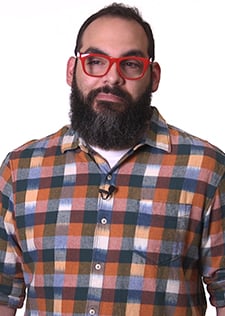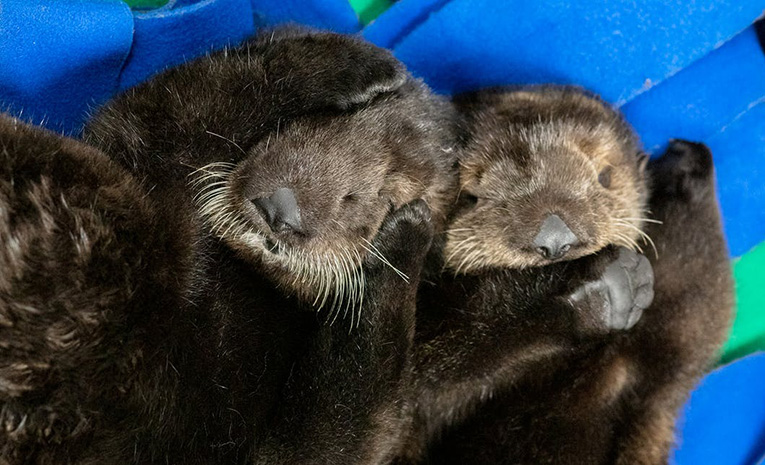Arts and Culture
Business Strategy
Fundraising
Article
Success Stories
02a6d099-7807-477d-a9fd-717f0092864a
7 min
https://edge.sitecorecloud.io/tessituraneab9a-tessiturane5642-staging-5396/media/Images/Licensee-Photography/Photos_768x465/Shedd_WildReef_768x465.jpg?h=465&iar=0&w=768
How Shedd Aquarium uses microphilanthropy to raise revenue and increase access
Little things add up
4/16/2024
7 min
What does it look like to be seamlessly and joyfully welcoming?

Greg Schultz
At the Chicago-based Shedd Aquarium, that commitment requires an ongoing balancing act. On the one hand, the aquarium strives to welcome the widest possible audience through a broad range of ticket options. On the other, it shoulders the responsibility of providing world-class care for 32,000 animals. “Sea otters eat a quarter of their body weight a day in restaurant-quality seafood,” said Greg Schultz, the aquarium’s Director of Donor Relations.
So, few good ideas are off the table when it comes to revenue generation. That also means investigating how unintended barriers may limit wider support.
Like many organizations, Shedd’s philanthropy program focuses its gift officers on higher-level donors. The membership team engages lower tiers, with aquarium memberships starting at $75.
This structure meant some of the aquarium’s nearly 2 million annual visitors were never considered for cultivation. “For some households, the minimum ask is going to be out of the question,” Greg said. “And that includes our membership options, which we think of as one of the best ways to visit.”

Shedd Aquarium is home to two subspecies of sea otters. Photo of sea otter pups by Brenna Hernandez.
Removing barriers
Shedd’s team wondered if they could identify more advocates by removing these obstacles. “By adopting a new approach with a lower barrier of entry, we can start to welcome those households that don’t see themselves here into joining us in our mission,” he said. “We’ve started dipping our toes into that mindset through round-up donations.”
The team already made round-up asks during on-site ticket sales. But the tactic was underused. “As anyone who’s ever coached their staff through upselling knows, having something available and having something offered are two different things,” Greg said.
A previous version of Shedd’s website also included a suggested $10 donation. But the aquarium dropped it when guests complained, mistaking it for a mandatory rather than optional charge.
“We can start to welcome those households that don’t see themselves here into joining us in our mission.”
Shedd launched its new round-up donation program in December 2020. “We found ourselves in the middle of a global pandemic faced with a future where it was clear we were going to have to pivot to a process that required almost all our guests to make a reservation in advance of their visit,” Greg said. “We would lose the face-to-face interaction and the ability to ask for a round-up or any gift. Our online ticket purchase pathway had no philanthropic ask. We saw an opportunity.”
Broadening support
The initial goal of the new round-up program was modest: to replace $2,200 in lost revenue. “We believed that surfacing this ask in front of more people would result in more conversions,” Greg said. “We couldn’t have anticipated how right we’d be.”
Considering Shedd chooses to round up to the nearest dollar — with all donations between just one and 99 cents — the results are impressive:
- In the first year, the aquarium raised $17,000 from 105,000 round-up gifts
- In each subsequent year, they have raised more money than in the previous one
- Approximately 22% of all qualifying web orders include a round-up gift
In the first year, the aquarium received 105,000 round-up gifts.
But the website isn’t the only avenue for microphilanthropy. Shedd integrated its round-up invitation across the aquarium. The guest relations team plays an important role in making asks on-site. For example, they solicited 93 cents for the aquarium’s 93rd birthday in June 2023.
Shedd’s program also includes several of its outside vendors. The aquarium’s food service provider solicits round-up gifts from diners. “And the gift shop team takes the service ethos of there only being one Shedd to heart,” Greg said. “Despite being an outside vendor, they’ve taken this on as a challenge. They have a better than 50% opt-in rate from their customers.”
Getting everyone on board requires teamwork from internal and external partners. “Doing so helps create a culture of collaboration and innovation,” Greg said. “Stronger relationships produce better outcomes. We remind ourselves that our collaborators are not providing us a service. When we tap someone to join a project, we do so with the goal that they become invested in its success.”

Shedd Aquarium welcomes nearly 2 million visitors to its Chicago home on Lake Michigan. Photo by Brenna Hernandez.
Building the pipeline
Shedd has seen across-the-board support for round-up donations from all audience demographics. “In addition to the modest and reliable fundraising arising out of these gifts, it’s had the knock-on effect of sliding into our donor pipeline very neatly,” he said. “We added so many new donors that we had to create a new tier to our pyramid.”
That means a much bigger base for future solicitation. In fact, round-up donors comprised the entire ticket buyer segment for the aquarium’s most recent membership campaigns.
“We draw from this pool for our acquisition efforts, which are monthslong campaigns of mailings, paid social media ads, emails and digital lightboxes on our website,” Greg said. “These all promote membership and offer a discount as an incentive to join.”
“Tessitura has been an amazing tool for us.”
Those who convert feed the aquarium’s long-term fundraising pipeline, managed in Tessitura. “We have a database of between 4 and 5 million records,” Greg said. “Our prospecting team sifts through that based on references, known quantities and behaviors that are all tracked in Tessitura.
“Tessitura has been an amazing tool for us,” he continued. “When I started in 2015, we took on a lot of work to clean up our fund and campaign structure. We took that work and applied it to our plans. Now our forecasting is a lot better and more accurate. We’re keeping more accurate donor records.”
Part of Greg’s goal is to broaden Tessitura use across the organization, including with colleagues from the learning and community teams. “We’re showing them the real opportunities for cross-team audience cultivation and stewardship. They like the idea of getting access to more people to spread the mission further. And we like the idea of soliciting people that are already engaged in aspects of our mission so we can further that relationship. We couldn’t do that without Tessitura.”
Expanding opportunities
Shedd continues to evaluate ways to improve its round-up donation program. That includes plans to revamp the design of the online donation ask and update the copy to make a more direct tie to aspects of the aquarium’s mission.
Yet, even as they work to increase the average gift size, they keep the ideals of microphilanthropy close at heart.
“We value the inherent accessibility and inclusiveness this mindset requires of us,” Greg said. “It keeps us empathetic to the realities of our community.
“Plus, as clichéd as it may sound, we really do believe that everyone, and every gift, can make a difference.”
“We really do believe that everyone, and every gift, can make a difference.”
Topics
Arts & Culture
/Business Strategy
/Fundraising

Technology brings bold vision to life at award-winning Australian arts centre
Arts & Culture / Ticketing & Admissions
How HOTA created a human-to-human customer experience with Tessitura-integrated kiosks

All-access theatre
Arts & Culture / Marketing / Theatre / Ticketing & Admissions
Two companies explore alternatives to the traditional subscription model

Membership without borders
Arts & Culture / Audience Development / Memberships
How Scottish Ballet’s free membership program grew an engaged, global fan base